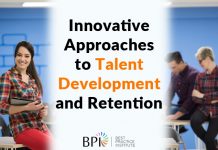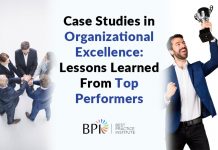Our Session with the Senior Executive Board brought great insights into Inclusion and Diversity.
Inclusion and diversity (I&D) are now almost universally accepted as a business imperative, having moved beyond compliance with the law and transcending sentiments of “it’s the right thing to do.” There is now empiric evidence that diverse teams – defined as comprising diversity of thought, background and experience – surpass non-diverse teams in tasks related to complex problem solving and prediction.1 Organizations no longer require an “I&D business case” as the impetus for action, rather the challenge for many organizations now is about closing the gap between positive intent and results. Focusing on the following four areas can assist in meeting this challenge.
- Sourcing Diverse Talent
“Recruit where you can win.” For example, Historically Black Colleges and Universities (HBCUs) would seem like an obvious starting point for at least one segment of diverse candidates. However, organizations with deep pockets (read: investment banks, professional services firms, “sexy” tech companies) assiduously target top tier talent from such schools. Identifying schools beyond the HBCUs and targeting top tier talent in “non-traditional” colleges and universities may be a more viable strategy for organizations that are not able to compete on compensation. Taking the top percentile from a non-traditional school may have a comparable yield from a second or third tier candidate from a more obvious source.
Be intentional with your value proposition for diverse segments. Every organization has a brand and conveys it through marketing and advertising. However brand is a multi-stakeholder proposition. Clearly communicating the specific elements of the “Employment Value Proposition (EVP)” for diverse candidates can result in powerful attraction factors for diverse segments such as:
- People at all levels of the organization are diverse;
- The organization mirrors the demographics of its region, customer and recruiting population;
- There is a clear and compelling articulation of the organization’s purpose and contribution to society; and,
- Candidates can envision an environment that supports their growth and development as a professional and a person.
Leverage Employee Resource Networks (ERNs). Many organizations have highly evolved ERNs, or affinity groups, but have not leveraged them as important levers for driving attraction and retention of diverse talent. Involving ERNs in activities such as sourcing talent, recruiting events, being stewards of the candidate experience, etc., has a powerful impact on attracting diverse candidates and demonstrates the organization’s commitment to promoting ERNs as more than a social support system.
Social media, social media, social media. With powerful search capabilities in social media tools like LinkedIn, recruiters can tap into the passive candidate market. Combining passive sourcing with targeted ads and “day in the life” profiles featuring diverse incumbents can enhance your organization’s profile with specific candidate segments and demonstrate an understanding of how to tap into the talent marketplace.
- Embed I&D in the Full Talent Management Life Cycle
Many organizations have instituted diverse slate and diverse interviewing panel protocols. Ensuring that key searches have a diverse slate of candidates – within the realistic confines of supply and demand – coupled with interview panels made up of individuals from different backgrounds, functional areas, gender, and generations enhance the candidate experience and enriches the decision making process. For hiring managers, it is a concrete way to demonstrate organizational commitment and provide multiple perspectives on candidates. For candidates, it signals the diverse make up the organization in which they are seeking employment. In large organizations with pockets of high turnover, i.e., call centers, front line retail professionals, etc., not every search may lend itself to such protocols. Analyzing organizational demographics, turnover patterns and hot job segments can help organizations target where such protocols will make the most impact.
Beyond talent acquisition, all facets of the talent management life cycle should have I&D built in. Organizations can analyze patterns in processes such as promotion, job mobility, and nominations into development programs to determine if there are biases or structural obstacles that may impede access and/or participation of diverse incumbents. For example, specific emphasis in talent reviews on diverse incumbents related to measures of retention risk, promotability, time in the current role, etc. can ensure that diverse incumbents are not overlooked or otherwise disadvantaged.
- Front Line Education
While many organizations offer some form of I&D training, traditional formal learning may not be as effective for arming those on the front lines – recruiters, hiring managers, interview panels – in the real-time process. Job aids and prompts known as “nudges”2 are increasingly seen as more effective than traditional classroom or online I&D education since they can be introduced to hiring managers as they enter into the hiring process.
An organization we are aware of requires all hiring managers, upon opening a job requisition, to review a brief online tutorial on the subject of Implicit Bias. In addition to explaining the concept and providing examples of how Implicit Bias plays out in the hiring process, the organization asks all hiring managers and interview panel members to take the Implicit Association Test (IAT). While teaching about bias has not been proven to eliminate it3, raising awareness of bias at the outset of the hiring process – coupled with guidance from recruiters trained in Implicit Bias – can be a powerful “nudge” for hiring managers as they are about to see candidates.
Another not so new but inconsistently practiced technique is to train hiring managers in structured, behavioral-event interviewing. Mahzarin Banaji, Professor of Psychology at Harvard University, believes that using structured interviewing is one way to counteract bias in the interview process. “Interviews are little Petri dishes where bias can grow very fast,” Banaji says. “Structured interviews are good. Most interviews are not structured.” 4
Developing competency-based interview questions and training hiring managers and other interviewers in Behavioral Event Interviewing (BEI) ensures that questions are asked of all candidates in the same manner and those insights drawn from candidate answers are based only on job-related competencies.
- Measure and Report
The quote, “What gets measured gets managed” (often incorrectly attributed to the famous management theorist Peter Drucker) contains great wisdom when it comes to making progress on I&D. While macro measures such as Employee Engagement Surveys and 360-degree feedback for managers are useful in identifying broad-brush areas of strength or weakness, many organizations have taken to more targeted means of tracking progress.
One organization we know of tracks the process of all diverse candidate segments from initial qualified candidate pool; to resumes sent to hiring managers; to candidates seen by hiring managers; to offers made; and, to offers accepted. This progression allows Human Resource professionals to identify if there is fall off at any point in the process and to investigate the possible causal factors. In addition, this organization has regular updates with the heads of each business to share these metrics and insights about the process and to reinforce the need for their involvement in the hiring process.
With the demographics of the workforce changing and business challenges becoming ever more complex, organizations should feel compelled to pull all the levers at their disposal to remain competitive in the marketplace and attractive and relevant as an employer. Integrating I&D into the talent management lifecycle is certainly one of those levers.
Sources
- The Difference: How the Power of Diversity Creates Better Groups, Firms, Schools and Societies, Scott E. Page, Princeton University Press, 2007
- Nudge: Improving Decisions about Health, Wealth, and Happiness, Richard Thaler and Cass Sunstein, Penguin Books, 2008
- How to Recognize (And Overcome) Your Unconscious Biases In Hiring, Fast Company, March 2015
- Interview with Professor Mahzarin Banaji, Harvard University, at the National Associate of Independent Schools conference, December 2015










